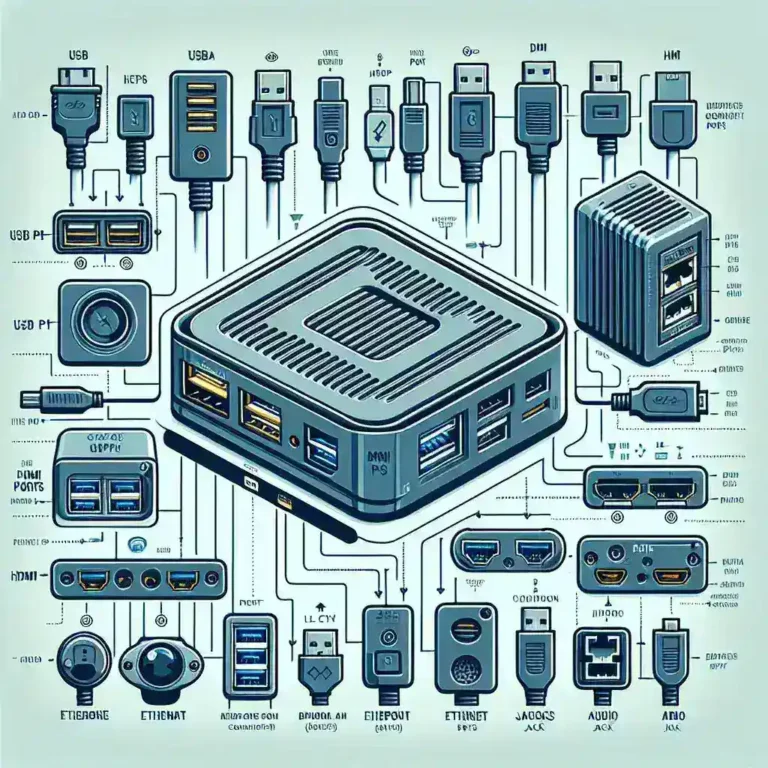Ultimate Guide to YouTube Video Download 4K: Everything You Need to Know
The Evolution of Ultra-High Definition Video Content
The digital landscape has undergone a remarkable transformation over the past decade, with video quality standards reaching unprecedented heights. 4K resolution, also known as Ultra High Definition (UHD), has become the gold standard for premium video content across various platforms. This technological advancement represents a fourfold increase in pixel density compared to traditional 1080p Full HD, delivering an astounding 3840 x 2160 pixel resolution that creates incredibly sharp, detailed, and immersive viewing experiences.
YouTube, as the world’s largest video-sharing platform, has embraced this evolution by supporting 4K content uploads and streaming since 2010. Today, millions of creators produce content in this ultra-high resolution format, ranging from cinematic travel documentaries and nature footage to gaming content and educational tutorials. The platform’s commitment to high-quality video has made it a treasure trove of stunning 4K content that viewers worldwide desire to preserve and enjoy offline.
For those seeking reliable solutions for Youtube video download 4k, understanding the technical aspects and available methods becomes crucial for achieving optimal results while maintaining video quality integrity.
Understanding 4K Video Technology and Its Impact
The technical specifications behind 4K video technology reveal why this format has revolutionized digital media consumption. With approximately 8.3 million pixels displayed simultaneously, 4K content provides four times the detail of standard HD video. This enhanced resolution translates to sharper text, more defined textures, and greater color depth that becomes particularly noticeable on larger displays.
From a storage perspective, 4K videos require significantly more space than their lower-resolution counterparts. A typical one-hour 4K video can occupy anywhere from 20 to 100 gigabytes of storage space, depending on the compression algorithm and bitrate used during encoding. This substantial file size reflects the enormous amount of visual information contained within each frame, making efficient downloading and storage solutions essential for content preservation.
The bandwidth requirements for streaming 4K content are equally demanding. YouTube recommends a minimum internet connection speed of 20 Mbps for smooth 4K playback, though higher speeds ensure better buffering performance and reduced loading times. These technical considerations directly impact the downloading process, as maintaining the original quality requires careful attention to compression settings and file format selection.
Video Codecs and Compression Standards
Modern 4K videos utilize advanced compression codecs to balance file size with visual quality. The most commonly encountered formats include H.264 (AVC), H.265 (HEVC), and the newer AV1 codec. Each compression standard offers different advantages in terms of file size efficiency and compatibility with various devices and media players.
H.264 remains the most widely supported codec across different platforms and devices, ensuring maximum compatibility for downloaded content. However, H.265 provides superior compression efficiency, reducing file sizes by approximately 25-50% compared to H.264 while maintaining equivalent visual quality. The emerging AV1 codec promises even greater compression efficiency, though device support remains limited compared to its predecessors.
Legal Considerations and Ethical Guidelines
Before exploring technical methods for downloading 4K YouTube content, understanding the legal framework surrounding video downloading is paramount. YouTube’s Terms of Service explicitly prohibit downloading videos without explicit permission from the content creator or copyright holder. This restriction exists to protect intellectual property rights and ensure creators maintain control over their content distribution.
However, several legitimate scenarios exist where downloading YouTube content may be permissible. Educational institutions often have fair use provisions that allow downloading for academic purposes. Additionally, some content creators explicitly grant permission for their videos to be downloaded and shared. Public domain content and Creative Commons licensed videos may also be downloaded legally, provided the specific license terms are respected.
The concept of personal backup represents another gray area in copyright law. Some jurisdictions recognize the right of individuals to create personal copies of legally accessed content for backup purposes, though this interpretation varies significantly across different countries and legal systems.
Respecting Creator Rights and Revenue Models
Content creators rely on various revenue streams to sustain their production efforts, including advertising revenue, sponsorships, and direct viewer support through memberships or donations. Downloading videos can potentially impact these revenue models by reducing view counts and advertisement impressions, which directly affect creator earnings.
Responsible downloading practices involve considering the impact on content creators and supporting their work through legitimate channels. This might include subscribing to channels, engaging with content through likes and comments, or contributing through official support mechanisms provided by the platform.
Technical Methods for High-Quality Video Preservation
Several technical approaches exist for preserving YouTube 4K content, each with distinct advantages and limitations. Browser-based solutions offer convenience and accessibility, while dedicated software applications provide enhanced functionality and format options. Understanding these different methodologies helps users select the most appropriate approach for their specific needs.
Web-based downloading services have gained popularity due to their simplicity and cross-platform compatibility. These services typically require users to paste the YouTube video URL into a web interface, which then processes the request and provides download links in various quality options. The most reliable platforms support multiple resolution formats, including 4K, and offer different file format choices to accommodate various playback devices.
One particularly noteworthy service that has established itself as a trusted resource in this space is TechRadar’s comprehensive guide to YouTube downloaders, which provides detailed comparisons of various downloading methods and their effectiveness for different use cases.
Quality Preservation Techniques
Maintaining original video quality during the downloading process requires attention to several technical factors. The source video’s bitrate, frame rate, and color depth all contribute to the final output quality. Advanced downloading tools often provide options to specify these parameters, allowing users to balance file size considerations with quality requirements.
Audio quality preservation is equally important, as 4K videos often feature high-quality audio tracks that complement the visual experience. Modern downloading solutions support various audio formats, including AAC, MP3, and lossless options like FLAC, ensuring the complete audiovisual experience is preserved.
Storage and Organization Strategies
The substantial file sizes associated with 4K video content necessitate thoughtful storage planning and organization strategies. A typical 4K video library can quickly consume terabytes of storage space, making efficient file management essential for long-term content preservation.
External storage solutions provide cost-effective options for expanding storage capacity. High-capacity external hard drives, network-attached storage (NAS) systems, and cloud storage services each offer different advantages for 4K video storage. External drives provide immediate access and portability, while NAS systems enable network-wide access and automated backup capabilities.
File naming conventions and folder structures play crucial roles in maintaining organized video libraries. Implementing consistent naming schemes that include video titles, creators, upload dates, and quality indicators helps facilitate easy content discovery and management. Metadata preservation tools can embed additional information directly into video files, including descriptions, tags, and creator information.
Backup and Redundancy Planning
Given the significant time investment required to build comprehensive 4K video collections, implementing robust backup strategies protects against data loss. The 3-2-1 backup rule recommends maintaining three copies of important data, stored on two different media types, with one copy stored off-site.
Cloud storage services offer convenient off-site backup solutions, though the large file sizes of 4K content may require substantial bandwidth and storage allocations. Alternatively, physical backup media such as external drives or optical discs provide offline storage options that remain accessible regardless of internet connectivity.
Device Compatibility and Playback Considerations
Successfully downloading 4K YouTube content represents only the first step in the content preservation process. Ensuring downloaded videos play correctly across various devices requires understanding compatibility requirements and potential limitations of different playback systems.
Modern smart TVs, streaming devices, and media players generally support 4K video playback, though specific codec support may vary between manufacturers and models. Checking device specifications and supported formats before downloading helps ensure compatibility and optimal playback performance.
Mobile devices present unique challenges for 4K video playback due to processing power limitations and battery consumption concerns. While flagship smartphones and tablets often support 4K video playback, the practical benefits may be limited due to screen size constraints and the substantial battery drain associated with high-resolution video processing.
Media Player Software Options
Selecting appropriate media player software significantly impacts the 4K video viewing experience. Professional-grade media players like VLC Media Player, PotPlayer, and MPC-HC offer extensive codec support and advanced playback features specifically designed for high-resolution content.
These applications often include hardware acceleration capabilities that leverage dedicated graphics processing units (GPUs) to reduce CPU load during 4K video playback. This hardware acceleration proves particularly beneficial for older systems that might struggle with the computational demands of ultra-high-definition video processing.
Network Infrastructure and Bandwidth Management
The process of downloading 4K YouTube content places significant demands on network infrastructure and internet connections. Understanding these requirements helps optimize downloading performance and manage bandwidth consumption effectively.
Download speeds directly correlate with the time required to acquire 4K video files. A typical 4K video file ranging from 1-10 gigabytes requires substantial download times even on high-speed connections. Calculating estimated download times based on available bandwidth helps plan downloading sessions and manage expectations regarding completion timeframes.
Bandwidth management becomes particularly important in shared network environments where multiple users compete for available internet resources. Implementing quality of service (QoS) controls or scheduling downloads during off-peak hours helps minimize network congestion and ensures optimal performance for all users.
According to Speedtest’s analysis of 4K streaming requirements, consistent high-speed connectivity remains essential for both streaming and downloading ultra-high-definition content effectively.
Connection Stability and Error Recovery
Large file downloads are susceptible to interruption due to network instability or temporary connectivity issues. Advanced downloading tools often include resume capabilities that allow interrupted downloads to continue from the point of failure rather than restarting the entire process.
Error checking and verification mechanisms help ensure downloaded files maintain integrity throughout the transfer process. These features become particularly valuable for large 4K video files where corruption could render the entire file unusable.
Quality Assessment and Verification Methods
Verifying the quality and integrity of downloaded 4K content ensures the preservation process achieves its intended goals. Several technical approaches exist for assessing video quality and identifying potential issues that might affect the viewing experience.
Visual inspection represents the most straightforward quality assessment method, involving careful examination of downloaded videos for artifacts, pixelation, or other quality degradation indicators. This process typically involves comparing downloaded content with the original source material to identify any discrepancies in visual fidelity.
Technical analysis tools provide more detailed quality metrics, including bitrate analysis, frame rate verification, and color depth assessment. These applications can identify subtle quality issues that might not be immediately apparent during casual viewing but could impact the long-term value of preserved content.
Metadata Preservation and Enhancement
Maintaining comprehensive metadata alongside downloaded 4K videos enhances their long-term value and usability. This information might include original upload dates, creator information, video descriptions, and technical specifications that provide context for the preserved content.
Metadata enhancement tools can automatically extract and embed additional information into video files, creating self-contained archives that retain important contextual information even when separated from their original sources.
Future-Proofing and Technology Evolution
The rapid pace of technological advancement in video technology necessitates consideration of future-proofing strategies when building 4K video collections. Understanding emerging trends and standards helps ensure preserved content remains accessible and relevant as technology continues to evolve.
The emergence of 8K resolution and beyond represents the next frontier in ultra-high-definition video technology. While 8K content remains relatively rare and requires substantial storage and processing resources, early adoption by content creators suggests this format will become increasingly prevalent in coming years.
Codec evolution continues to drive improvements in compression efficiency and quality preservation. The ongoing development of next-generation compression standards promises to deliver better quality at smaller file sizes, potentially revolutionizing the storage requirements for high-resolution video content.
Archival Standards and Long-Term Preservation
Professional archival standards provide guidance for long-term digital preservation that extends beyond immediate viewing needs. These standards address file format selection, storage media longevity, and migration strategies that ensure content remains accessible across technology generations.
Implementing archival best practices for personal 4K video collections helps protect against format obsolescence and ensures preserved content maintains its value over extended periods. This might involve maintaining multiple format versions or planning periodic migration to newer standards as they emerge.
Performance Optimization and System Requirements
Successfully managing 4K video downloads and playback requires careful attention to system performance optimization. The computational demands of ultra-high-definition content can strain system resources and impact overall computer performance if not properly managed.
Hardware requirements for 4K video processing include sufficient RAM, processing power, and storage bandwidth. Modern systems benefit from solid-state drives (SSDs) that provide faster data access speeds compared to traditional mechanical hard drives, particularly important for smooth 4K video playback.
Graphics processing unit (GPU) acceleration significantly improves 4K video performance by offloading computational tasks from the main processor. Both NVIDIA and AMD offer hardware acceleration technologies specifically designed to optimize high-resolution video processing and reduce system load during playback operations.
Thermal Management and System Stability
Extended 4K video processing can generate substantial heat within computer systems, potentially affecting performance and stability. Implementing adequate cooling solutions and monitoring system temperatures helps maintain optimal performance during intensive downloading and playback sessions.
Power management considerations become particularly relevant for laptop users who may experience reduced battery life during 4K video operations. Understanding these limitations helps plan usage patterns and implement power-saving strategies when necessary.
Community Resources and Support Networks
The 4K video enthusiast community provides valuable resources for troubleshooting issues, sharing optimization techniques, and discovering new tools and methods. Online forums, social media groups, and specialized websites offer platforms for knowledge sharing and collaborative problem-solving.
These communities often develop and maintain comprehensive guides, tool recommendations, and best practice documentation that benefits users at all experience levels. Participating in these networks provides access to collective knowledge and real-world experience that extends beyond official documentation and marketing materials.
Educational resources, including video tutorials and written guides, help users develop the technical skills necessary for effective 4K video management. These materials often cover advanced topics such as custom scripting, automation techniques, and integration with other digital media workflows.
Collaborative Development and Open Source Solutions
Open source software development has produced numerous high-quality tools for 4K video downloading and management. These community-driven projects often provide features and capabilities that exceed those available in commercial alternatives, while maintaining transparency and user control over functionality.
Contributing to open source projects, whether through code development, documentation, or testing, helps improve these tools for the entire community while developing valuable technical skills and knowledge.







